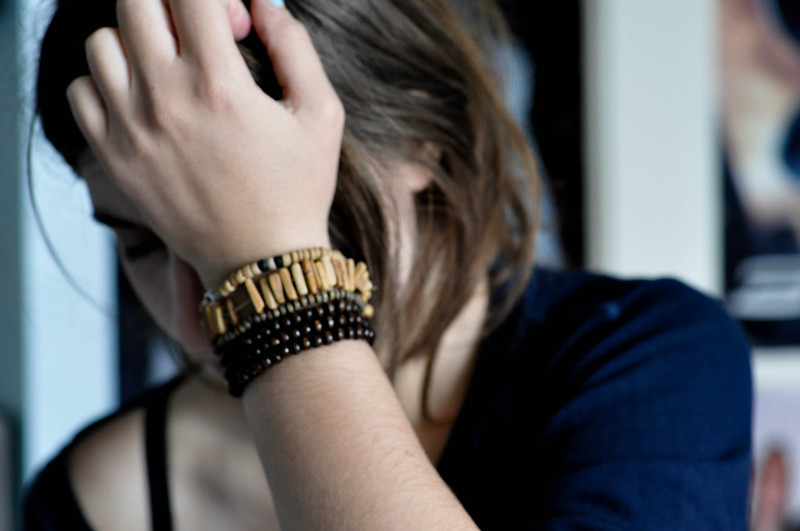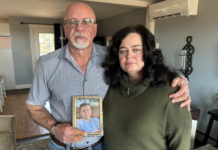In a recent comparison study published in the Community Mental Health Journal, two approaches to treating depression and anxiety symptoms experienced by young adults were evaluated, a 13-week program featuring overlapping biopsychosocial components and outpatient psychiatric care comprising medication-only. The research team, led by Shannon Hughes of Colorado State University, investigated both short- and long-term effects of both treatment approaches.
Findings indicated that the biopsychosocial, holistic treatment program produced significant effects linked to relief in depression and anxiety symptoms at the conclusion of the intervention and two months following the intervention. The medication-only intervention results were independently and comparatively poor—demonstrating “[n]o evidence of change on any outcome.” Although the superior treatment program’s comprehensive nature may make it more resource-intensive for clients and providers alike than medication-alone, these outcomes are compelling.
“The medical-disease model of distress and associated psychiatric diagnoses have been criticized for being overly reductionist, dismissive of complex lived experiences, and lacking scientific validity. Myriad possibilities exist for understanding and working through mental and emotional distress in ways that do not favor psychiatric diagnosis and medication taking, and young people, in particular, report preferences for such approaches.”
 Depression and anxiety are both considered internalizing disorders, distinct in symptomology and impact. They share many similarities in cause and presentation (e.g., social determinants and implications) and popular treatment strategies (e.g., cognitive-behavioral therapy and pharmacological intervention). Although identification and intervention efforts associated with both have been scaled up in recent decades, research indicates that they continue to increase in prevalence among young adults.
Depression and anxiety are both considered internalizing disorders, distinct in symptomology and impact. They share many similarities in cause and presentation (e.g., social determinants and implications) and popular treatment strategies (e.g., cognitive-behavioral therapy and pharmacological intervention). Although identification and intervention efforts associated with both have been scaled up in recent decades, research indicates that they continue to increase in prevalence among young adults.
According to a 2017 study cited by Hughes and colleagues, 12.7% of young people in the US over the age of 12 had reported having taken antidepressants within the past month. Psychiatric medication remains a common intervention strategy despite questionable evidence of efficacy, the potential for complex side effects, and growing evidence in favor of lifestyle and behaviorally oriented treatment approaches.
“Safety concerns, including suicidal ideation and behavioral toxicity, are routinely under-reported in drug- industry-funded clinical trials of antidepressant and other psychotropic drugs, suggesting that antidepressant prescription practices might be based on flawed evidence regarding relative benefits and harms.”
Hughes and colleagues’ project extends prior research by integrating an assortment of research-supported elements into a single, discrete, holistic program – the Learning & Self-development Collaborative (LSDC) – to combat anxiety and depressive symptoms. In this study, comparison group participants were exposed to antidepressant medication as an alternative based on its popularity in standard outpatient treatment.
The LSDC is an immersive treatment program that includes nutritional, movement, and psychosocial elements. Because it requires significant time and engagement from participants, individuals involved in the Hughes and colleagues’ study were given a financial stipend to offset associated burdens.
The LSDC challenges the medical model by focusing on naturopathic techniques, consciousness-raising, and emphasis on active participation through engagement in individual and small group services and participation in community-based activities.
“Program group participants were enrolled […] in a package of services spanning over 4 months, including: (1) an evaluation and three monthly follow-up visits with a naturopathic doctor for coaching on diet, sleep, and lifestyle adjustments that can affect mood, (2) a daily supply of a comprehensive multi-vitamin and multi-mineral supplement and pharmaceutical grade fish oil supplement […], (3) a weekly non-clinical group with trained facilitators delivering six units of a consciousness-raising curriculum alternating with seven weeks of peer support, and (4) a $100 monthly stipend ($400 total) for community-based activities of participants’ choosing.”
A sample of young adults aged 18-26 was recruited through social media, community flyers, and provider referrals. Screening measures were administered to establish eligibility (i.e., levels of depressive symptoms and/or anxiety symptoms) and sort participants into treatment conditions.
Those who met eligibility criteria were assigned to the holistic intervention group if they reported no or infrequent use of psychiatric medication within the past 60 days (n = 26) or into the medication-only condition if they reported daily or near-daily use of psychiatric medication (n = 13). Both groups were demographically similar – predominately White and female.
Study outcomes were assessed according to self-report measures of depression, anxiety, quality of life (QoL), physical QoL, psychological QoL, social QoL, empowerment, and social connectedness. Significant improvements were observed within the LSDC holistic treatment group across all domains but physical QoL and social QoL at the conclusion of the intervention.
Significant improvements were sustained with depression, anxiety, and psychological QoL two months post-intervention as well. No significant effects were observed in the medication-only comparison group immediately post-intervention nor two months following. Follow-up focus groups were also conducted to clarify areas of impact.
“In follow-up focus groups, participants highlighted the following key program ingredients: caring for the body via diet and lifestyle, attending to relationships with self and others, encouraging social connections and activities, validating lived experiences in a non-judgmental manner, and taking an overall holistic approach.”
Some of the major limitations to this study include a lack of randomization, small and uneven treatment group sizes, characteristic differences identified between groups (i.e., socioeconomic factors), potential pre-intervention perspectives regarding psychiatric medication, and overall homogeneity of participants.
Components of the LSDC holistic treatment approach, given its comprehensive structure, may also be challenging to make accessible to those who could best benefit from it. However, this study adds to a consistently growing body of evidence that interventions targeting lifestyle and behavioral factors can provide significant relief to young people experiencing anxiety and depression symptoms.
“A holistic self-learning model based on diet and lifestyle, education for self-development, peer support, and activity exploration is a viable and potentially cost-effective alternative to standard outpatient mental health care for young adults.”
****
Hughes, S., Rondeau, M., Shannon, S. Sharp, J., Ivins, G., Lee, J., Taylor, I., & Bendixsen, B. (2021). A holistic self-learning approach for young adult depression and anxiety compared to medication-based treatment-as-usual. Community Ment Health J. 57, 392–https://doi.org/10.1007/s10597-020-00666-9 (Link)















Thank you Sadie,
Of course it does, because any drug a person takes for ‘anxiety’, will always make the ‘anxiety’ worse (- in the long run).
There is a ‘get out clause’ for ‘Anxiety’. Anyone that doesn’t know this, will always be (a little bit) frightened.
Report comment
Give me 20 young adults for a year, to involve them daily in joyful, invigorating
experiences.
This week we go camping, chop wood, cook meals on a fire, be innovative.
Next week we go on a week long canoe trip, with a goal island in mind.
We paint or discuss what we see.
We look at and identify fauna and flora. Birds and insects.
We plan to DO something. Perhaps build or renovate a house for a poor family.
We deliver meals.
We work in soup kitchens, and we fix bikes.
We involve ourselves in art and writing classes.
We try our hand at cooking courses, carpentry, plumbing.
We make music, a shitty fun band.
We do improv and debates.
We try our skill at push ups, yoga and dance.
And psychiatry and it’s mental health people can have the other 20 youth.
And then we can do my suggestions with the 20 that psych had.
Report comment
To add more details. The direct monetary cost to provide psych “treatment” to the average psych “patient” is around $6,000 a year. For each 20 person group you get $120,000 per year for expenditures.
We should also have a treatment group where each person is just given the money with no strings. A study found that giving the people money resulted in better outcomes compared to those getting psych.
(1) https://www.nber.org/system/files/working_papers/w28106/w28106.pdf?fbclid=IwAR2vJl7rqLh0Ol9gl4XdbIQZw6qa3SFo4t0OwsH9fNjMXjjW59H4vA4oEG8
Report comment
Willoweed, $6,000 is a nice little bonus!
A few years ago London School of Economics Economist, Professor Martin Knapp calculated the UK cost of each Severely Mentally Ill Person to the Economy at £65,000 per person per year.
I wouldn’t mind getting £65,000 per year for looking after myself!
Report comment
Anxiety is similar to post traumatic stress disorder, the dynamic can be very convincing.
A brilliant description of how to accommodate “high anxiety”, comes from Eckhart Tolle (below):-
https://www.newworldlibrary.com/Blog/tabid/767/articleType/ArticleView/articleId/438/DISSOLVING-THE-PAIN-BODY-An-excerpt-from-THE-POWER-OF-NOW-by-Eckhart-Tolle.aspx#.Xpgwhx7TUwA
(I learned how to cope with “Very High Anxiety” when I carefully tapered in the 1980s, from drugs suitable for “Schizophrenia”. So I know it’s possible for everyone to do this).
Report comment
Your experimental group would have probably done even better had the experimenters done things like trace mineral analyses and testing perceptual stability to determine what nutrients to use for each member of your experimental group, but that would deprive the experimenters efforts to put uniform groups together.
Report comment
Medication only – no improvement (except for drug company profits and health provider wages) but lots of risks to the client.
Nuff said
Report comment
Again with the “approaches.” Again treating feelings of sadness and hopelessness as “conditions” to be eviscerated, whether by chemicals or less noxious means.
Report comment
“antidepressant prescription practices [are] based on flawed evidence regarding relative benefits and harms.”
And a big part of the problem is the mainstream doctors and “mental health” workers claim ignorance of, or actually did not know anything about, the common adverse and withdrawal effects of their psych drugs. For example, they didn’t know that brain zaps, a common withdrawal effect of the antidepressants, was even such, until 2005.
https://www.cambridge.org/core/journals/psychiatric-bulletin/article/brain-shivers-from-chat-room-to-clinic/642FBBAE131EAB792E474F02A4B2CCC0
“In follow-up focus groups, participants highlighted the following key program ingredients: caring for the body via diet and lifestyle, attending to relationships with self and others, encouraging social connections and activities, validating lived experiences in a non-judgmental manner, and taking an overall holistic approach.” Yes, this would be an appropriate manner in which to treat other human beings.
My psychiatrist tried to get me to stop exercising, and I was threatened and forced to take drugs that can cause extreme weight gain. My psychologist told me to “quit all your activities, and concentrate on the meds.” My medical records show that I was referred to by the DSM stigmatization that they gave me, rather than by my name. And a psychologist and psychiatrist, who had not looked at my work and did not know me, declared me to be “w/o work, content and talent” and “irrelevant to reality.” And my Lutheran psychologist called herself a “holistic, Christian talk therapist.”
I’m pretty certain those “holistic” psychologists and psychiatrists are going to have to start doing things in 100% the opposite way, than they did it 20 years ago. The psychological and psychiatric professions, and all their “mental health” system, should also get out of the systemic child abuse covering up business.
https://www.indybay.org/newsitems/2019/01/23/18820633.php?fbclid=IwAR2-cgZPcEvbz7yFqMuUwneIuaqGleGiOzackY4N2sPeVXolwmEga5iKxdo
https://www.madinamerica.com/2016/04/heal-for-life/
Which is all by DSM design.
https://www.psychologytoday.com/us/blog/your-child-does-not-have-bipolar-disorder/201402/dsm-5-and-child-neglect-and-abuse-1
Thankfully, my wildly deluded psychiatrist – by that non-“holistic, Christian psychologist” – did finally bother to look at my work, concluded it was “work of smart female,” and “insightful.” So he did wean me off his anticholinergic toxidrome inducing drugs cocktails.
But now my work is so “too truthful,” once the truth is attached to it, that another psychologist attempted to steal all profits from it, and all my money and artwork eventually, according to the BS “art manager” contract he handed me.
Maybe people without medical degrees (only psychiatrists in the “mental health” industry, actually have them) should not be misdiagnosing people, with the scientifically “invalid” psychiatric / psychological DSM disorders? Or, better yet, maybe no one should.
https://www.nimh.nih.gov/about/directors/thomas-insel/blog/2013/transforming-diagnosis.shtml
And maybe psychiatrists should learn what the common adverse and withdrawal effects of their drugs actually are, prior to prescribing them? Or, at least, stop calling themselves “professionals,” until they do so.
Especially since it was the scientific journalist, Robert Whitaker – not a “mental health professional” – who had to point out that the ADHD drugs and antidepressants, can both create the “bipolar” symptoms, and over a million American children have already been misdiagnosed.
https://www.alternet.org/2010/04/are_prozac_and_other_psychiatric_drugs_causing_the_astonishing_rise_of_mental_illness_in_america/
And you have a multiple Phi Beta Kappa family member, artist, who found the medical proof that all those misdiagnosed “bipolar” children, who will be given the “schizophrenia” drugs – the antipsychotics / neuroleptics – will likely be turned into “schizophrenics.”
Since that drug class can create the positive symptoms of “schizophrenia,” via anticholinergic toxidrome. As well as the negative symptoms of “schizophrenia,” via neuroleptic induced deficit syndrome.
https://en.wikipedia.org/wiki/Toxidrome
https://en.wikipedia.org/wiki/Neuroleptic-induced_deficit_syndrome
Oops! So much for the scientific validity of the “sacred symbol of psychiatry.” I do so hope and pray, both the American psychological and psychiatric industries some day do garner insight into the importance of repenting, confessing, and making proper amends – since they’re raping our entire society for their malpractice insurance – for their, massive on a societal scale, malpractice.
Report comment